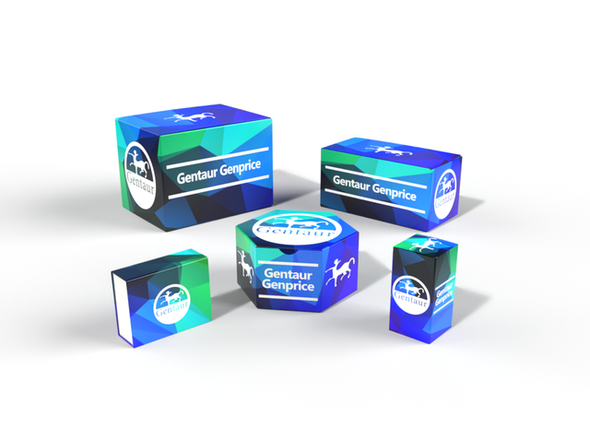749
Mouse Wolframin (WFS1) ELISA Kit | KTE70013
- SKU:
- 749-KTE70013
- Availability:
- Usually ships in 5 working days
Description
Mouse Wolframin (WFS1) ELISA Kit | KTE70013 | Gentaur UK, US & Europe Distribution
Application: This Mouse Wolframin (WFS1) ELISA Kit employs a two-site sandwich ELISA to quantitate WFS1 in samples. An antibody specific for WFS1 has been pre-coated onto a microplate. Standards and samples are pipetted into the wells and anyWFS1 present is bound by the immobilized antibody. After removing any unbound substances, a biotin-conjugated antibody specific for WFS1 is added to the wells. After washing, Streptavidin conjugated Horseradish Peroxidase (HRP) is added to the wells. Following a wash to remove any unbound avidin-enzyme reagent, a substrate solution is added to the wells and color develops in proportion to the amount of WFS1 bound in the initial step. The color development is stopped and the intensity of the color is measured.
Detection Method: Colorimetric
Conjugate: N/A
Sample Type: Cell culture supernatants#Serum#Plasma#Other biological fluids
Assay Type: Multiple steps standard sandwich ELISA assay with a working time of 3-5 hours. It depends on the experience of the operation person.
Kit Component: • Mouse Wolframin microplate
• Mouse Wolframin standard
• Mouse Wolframin detect antibody
• Streptavidin-HRP
• Standard diluent
• Assay buffer
• HRP substrate
• Stop solution
• Wash buffer
• Plate covers
Features & Benefits: Mouse Wolframin (WFS1) ELISA Kit has high sensitivity and excellent specificity for detection of Mouse WFS1. No significant cross-reactivity or interference between Mouse WFS1 and analogues was observed.
Calibration Range: Please inquire
Limit Of Detection: Please inquire
Usage Note: • Do not mix components from different kit lots or use reagents beyond the kit expiration date.
• Allow all reagents to warm to room temperature for at least 30 minutes before opening.
• Pre-rinse the pipet tip with reagent, use fresh pipet tips for each sample, standard and reagent to avoid contamination.
• Unused wells must be kept desiccated at 4 °C in the sealed bag provided.
• Mix Thoroughly is very important for the result. It is recommended using low frequency oscillator or slight hand shaking every 10 minutes.
• It is recommended that all samples and standards be assayed in duplicate or triplicate.
Storage Instruction: The unopened kit should be stored at 2 - 8°C. After opening, please store refer to protocols.
Shipping: Gel pack with blue ice.
Precaution The product listed herein is for research use only and is not intended for use in human or clinical diagnosis. Suggested applications of our products are not recommendations to use our products in violation of any patent or as a license. We cannot be responsible for patent infringements or other violations that may occur with the use of this product.
Background: Human WHDC1 expressed in insect cells had an apparent molecular mass of about 100 kD by SDS-PAGE. Western blot analysis detected WHDC1 in most human and mouse organs examined, with highest expression in brain. WHDC1 was also expressed in all cultured cell lines tested. WHDC1 partitioned predominantly in the membrane fraction of COS-7 cells, and it appeared to be a peripheral membrane protein, since high salt or alkaline pH released it into the soluble fraction. Immunohistochemical analysis localized WHDC1 primarily to the perinuclear compartment, near the microtubule-organizing center. In some cells, it also localized to tubulovesicular structures in the cell periphery. WHDC1 colocalized extensively with the cis-Golgi marker GM130 (GOLGA2), but not with medial- or trans-Golgi markers.
Alternative Names: WFS1; FLJ51211; WFRS; WFS; WOLFRAMIN; wolframin
Search name: WFS1; FLJ51211; WFRS; WFS; WOLFRAMIN; wolframin
Tag: WFS1






